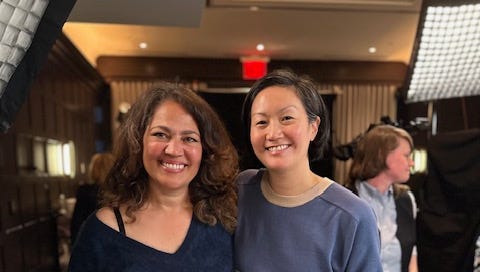Presidential Candidates, Patients, and Cartoonists Who Happen to Be Women
An account of our whirlwind trip to New York
This is Emily Writes Back, a newsletter for brilliant people, by Emily Sanders Hopkins.
At the Algonquin on Sunday, here I am (“first known Black woman New Yorker cartoonist”) with Amy Hwang, the first Asian New Yorker cartoonist that we know of. Check out some of Amy’s hilarious cartoons here. What I find special about Amy’s cartoon style/voice is the …
Keep reading with a 7-day free trial
Subscribe to Emily Writes Back to keep reading this post and get 7 days of free access to the full post archives.



